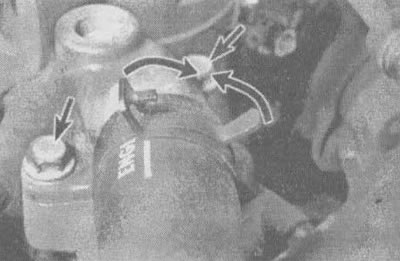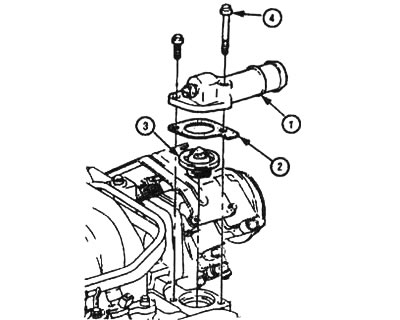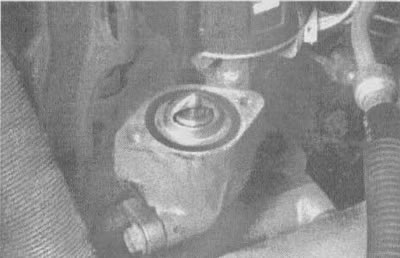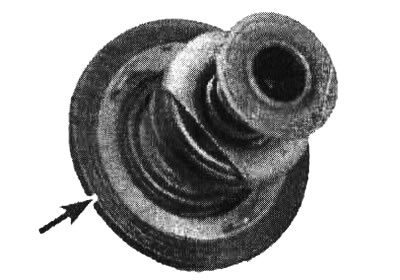Attention! Do not remove the radiator cap, drain the coolant, or replace the thermostat until the engine is completely cool.
Examination
1. Before deciding "guilty" If the thermostat is in problems with the cooling system, check the coolant level (see chapter 1, section 4), drive belt tension (see chapter 1, section 21) and operation of the temperature sensor.
2. If the engine seems to take too long to warm up, the thermostat appears to be stuck open. Replace thermostat.
3. If the engine gets too hot, check the temperature of the upper radiator hose by hand. If the hose is not hot and the engine is hot, the thermostat is probably stuck closed. Replace thermostat.
Attention! Do not operate the vehicle without a thermostat. The computer may select the wrong mode of operation and because of this, the efficiency of the engine will suffer, which will lead to the emission of harmful gases into the atmosphere.
4. If the top radiator hose is hot, coolant is flowing through that hose and the thermostat is open.
Replacement
5. Disconnect the wire from the negative battery terminal and drain the liquid from the cooling system (see chapter 1, section 29). If the coolant is relatively fresh or in good condition, save it and reuse it.
6. On vehicles with a 3.8L engine, remove the air filter to gain access to the thermostat housing (see chapter 4, section 8).
7. To find the thermostat, track where the upper radiator hose goes from the engine.
8. Loosen the hose clamp, then separate the hose from the fitting (see illustration). If the hose is stuck, grasp it near the end with suitable pliers and bend to break the connection, then remove. If the hose is old or worn, cut it off and install a new one.

3.8. To remove the thermostat, squeeze the clips on the hose clamp (indicated by arrows), then move the clamp to the back of the hose, separate the hose from the thermostat cover and remove the bolts (indicated by arrows)
9. If the outer surface of the large nozzle is worn (has traces of destruction, corrosion, etc.), then removing the hose can damage it even more. If this is the case, the thermostat cover will need to be replaced.
10. Turn away bolts and nuts and remove a cover of the thermostat (see accompanying illustration and illustration 3.8). If the lid is stuck, tap it with a soft-faced hammer. Be prepared for some coolant to spill if the gasket seal breaks.

3.10. Disassembled thermostat and thermostat housing (engine 3, 8 l): 1 - thermostat cover, 2 - gasket, 3 - thermostat, 4 - bolts
11. Paying attention to how the thermostat is installed (which side up), take it off (see illustration).

3.11. Before removing the thermostat, remember its position
12. On vehicles with a 3.8L engine, remove any remaining old gasket material and seal from the body with a gasket removal scraper. Clean the mating surfaces with paint thinner or acetone.
13. Replace thermostat seal (see illustration).

3.13. If you are running a 3.1L engine, be sure to replace the thermostat seal (indicated by an arrow)
14. Install a new thermostat in the housing. Make sure it is installed with the correct side up (the end with the spring is usually directed towards the engine).
15. On vehicles with a 3.8L engine, replace the thermostat gasket. Install the gasket so that the lugs point upwards.
16. Install the cover and tighten the bolts and nuts. Tighten them to the torque specified in the specifications of this chapter.
17. Remaining operations are performed in reverse order.
18. Fill the system with coolant (see chapter 1, section 29).
Note. Do not allow air to enter the system.
19. Start the engine and let it warm up to normal operating temperature, then check for leaks and check that the thermostat is working properly (see paragraphs. 2-4).
